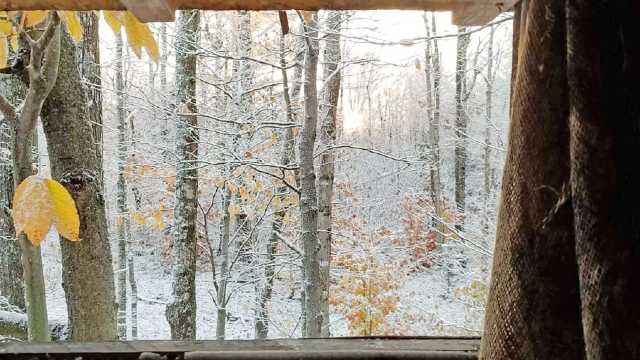By Carol Stiffler
Hunters in Michigan who have been concerned about deer population figures now have something new to consider. The first-ever Deer Harvest Summary is rolling in during the ongoing white-tailed deer hunting season. Figures are updated throughout each day, and they’re showing where the deer are, and to some extent, where they’re not.
Under new deer harvest reporting regulations, hunters are given up to 72 hours to report their kill online to the Michigan Department of Natural Resources. While the firearms season ended on November 30, the muzzleloader season began on December 2, and harvest numbers are still rolling in.
Figures to date show smaller harvests in northern counties like Luce, where 278 antlered deer and 15 antlerless deer were reported harvested through 1 p.m. on Tuesday December 6.
“It’s not surprising to me,” said DNR Wildlife Biologist Kristie Sitar, who works out of the Newberry office. “The northern areas have reduced deer numbers for sure. As you move south within the U.P., from Lake Superior to Lake Michigan, deer densities increase.”
The deer migration hasn’t begun yet, Sitar said, because the warm and dry winter to date have allowed northern deer to stay put for now. If migration is triggered before the end of the hunting seasons, she expects to see even lower harvest figures in Luce County because the deer will head to Mackinac County.
Sitar also noted the U.P. has had severe winters for the past 10 years in a row.
“That is huge,” she said. “That is huge. You cannot have 10 severe winters in northern areas and have a lot of deer there. It doesn’t work that way.”
Hunters who requested optional deer aging have also shown the DNR that deer in the northern U.P. had body weights and antler densities that were somewhat reduced.
“That’s typical after a bad winter,” Sitar said.
Counties in the lower peninsula have much higher deer densities, she said, with numbers like 50 deer per square mile. Deer harvests in those counties, and licenses issued, are higher.
In comparison, Luce County has five or 10 deer per square mile, Sitar said.
It’s too soon to compare this year’s numbers to any other year, as a complete and mandatory harvest report has never been obtained before. The Michigan DNR switched to mandatory reporting this year after a steep decline in response rates to the voluntary hunter surveys sent out after previous hunting seasons.
In 2000, the DNR estimated 74% of surveys were returned. By 2021, that number fell to 33%. That led to a lack of confidence in deer population estimates.
Deer count estimates were also impacted by the ratio of licenses sold to harvest reports voluntarily provided, Sitar said.
More information about deer hunter success rates and harvests will be available after the conclusion of the hunting season. The late antlerless firearm season ends on January 1, 2023.
2022 Deer Harvest Summary through December 1 p.m. Dec. 6
County Antlered Antlerless
Alger 516 84
Baraga 675 46
Chippewa 895 186
Delta 2293 1093
Dickinson 1319 567
Gogebic 460 43
Houghton 841 99
Iron 1365 815
Keweenaw 153 2
Luce 278 15
Mackinac 591 156
Marquette 1775 204
Menominee 3276 1795
Ontonagon 867 105
Schoolcraft 705 134







